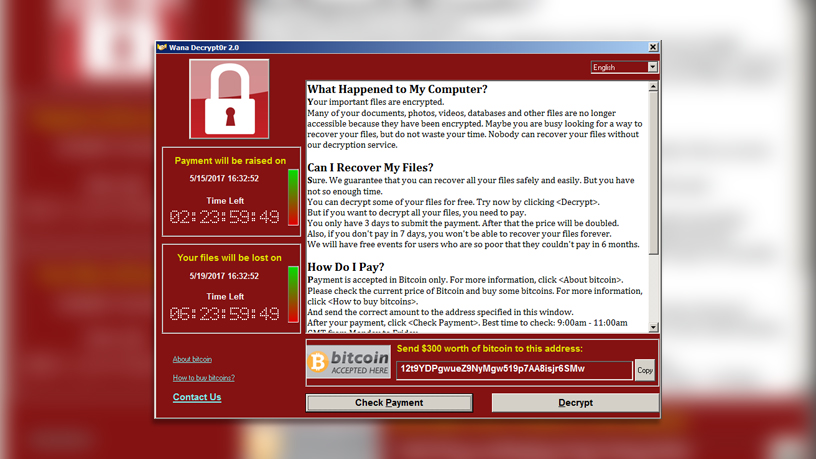Report finds ransomware hitting manufacturers hardest
Several ransomware families prioritized the manufacturing sector in the last year


Manufacturing companies are the most likely targets of double-extortion ransomware attacks, according to a report from research team ThreatLabZ this week.
In a double-extortion attack, criminals not only encrypt data but steal it too, enabling them to blackmail victims into preventing its publication. ThreatLabZ, ZScaler's research team, noted that 12.7% of the companies affected by these attacks were in the manufacturing sector, followed by services companies. This stood out from a cluster of other sectors who each accounted for between 8 and 9% of attacks: services, transportation, retail, and technology. This report follows a previous study that found a 300% increase in cyber attacks on manufacturing organizations.
ThreatLabZ identified seven ransomware families that stood out as sources of double-extortion attacks. The most common was Maze, which accounted for 273 attacks in the last year. Even though Maze ceased operations in November 2020, it still outpaced the Conti ransomware, which took second place with 190 attacks.
The Ragnar Locker ransomware, which sets up a virtual machine on its target machine, focused the most on the manufacturing sector, with 22% of its attacks hitting those companies.
Doppelpaymer was also focused on manufacturing, targeting manufacturers in 15.1% of its incidents.
Manufacturing was also Conti's top target, attracting 12.4% of its attacks, while Sodinokibi/REvil featured manufacturing and transportation equally as its top target sectors.
ThreatLabz also examined DarkSide, which is of particular interest this week after its use in the Colonial Pipeline attack. The group, which clarified its motives for hitting the pipeline this week, focused only 2.8% of its attacks on the oil and gas sector. Services was its go-to sector, accounting for 16.7% of attacks.
Sign up today and you will receive a free copy of our Future Focus 2025 report - the leading guidance on AI, cybersecurity and other IT challenges as per 700+ senior executives
Anti-ransomware company Coveware highlighted a rise in double-extortion attacks in its most recent Q1 ransomware research, which reported that 77% of attacks now featured this tactic, up 10% from Q4 2020.
Danny Bradbury has been a print journalist specialising in technology since 1989 and a freelance writer since 1994. He has written for national publications on both sides of the Atlantic and has won awards for his investigative cybersecurity journalism work and his arts and culture writing.
Danny writes about many different technology issues for audiences ranging from consumers through to software developers and CIOs. He also ghostwrites articles for many C-suite business executives in the technology sector and has worked as a presenter for multiple webinars and podcasts.
-
 15-year-old revealed as key player in Scattered LAPSUS$ Hunters
15-year-old revealed as key player in Scattered LAPSUS$ HuntersNews 'Rey' says he's trying to leave Scattered LAPSUS$ Hunters and is prepared to cooperate with law enforcement
-
 The Scattered Lapsus$ Hunters group is targeting Zendesk customers – here’s what you need to know
The Scattered Lapsus$ Hunters group is targeting Zendesk customers – here’s what you need to knowNews The group appears to be infecting support and help-desk personnel with remote access trojans and other forms of malware
-
 Impact of Asahi cyber attack laid bare as company confirms 1.5 million customers exposed
Impact of Asahi cyber attack laid bare as company confirms 1.5 million customers exposedNews No ransom has been paid, said president and group CEO Atsushi Katsuki, and the company is restoring its systems
-
 The US, UK, and Australia just imposed sanctions on a Russian cyber crime group – 'we are exposing their dark networks and going after those responsible'
The US, UK, and Australia just imposed sanctions on a Russian cyber crime group – 'we are exposing their dark networks and going after those responsible'News Media Land offers 'bulletproof' hosting services used for ransomware and DDoS attacks around the world
-
 A notorious ransomware group is spreading fake Microsoft Teams ads to snare victims
A notorious ransomware group is spreading fake Microsoft Teams ads to snare victimsNews The Rhysida ransomware group is leveraging Trusted Signing from Microsoft to lend plausibility to its activities
-
 Volkswagen confirms security ‘incident’ amid ransomware breach claims
Volkswagen confirms security ‘incident’ amid ransomware breach claimsNews Volkswagen has confirmed a security "incident" has occurred, but insists no IT systems have been compromised.
-
 The number of ransomware groups rockets as new, smaller players emerge
The number of ransomware groups rockets as new, smaller players emergeNews The good news is that the number of victims remains steady
-
 Teens arrested over nursery chain Kido hack
Teens arrested over nursery chain Kido hacknews The ransom attack caused widespread shock when the hackers published children's personal data


